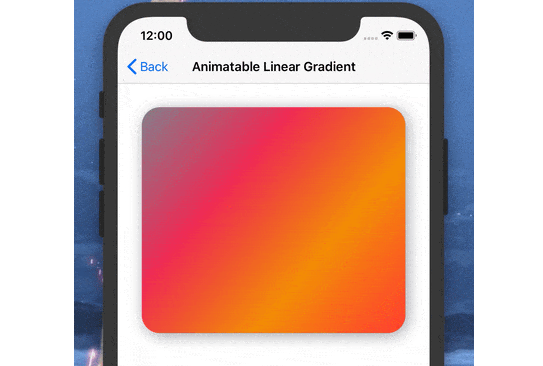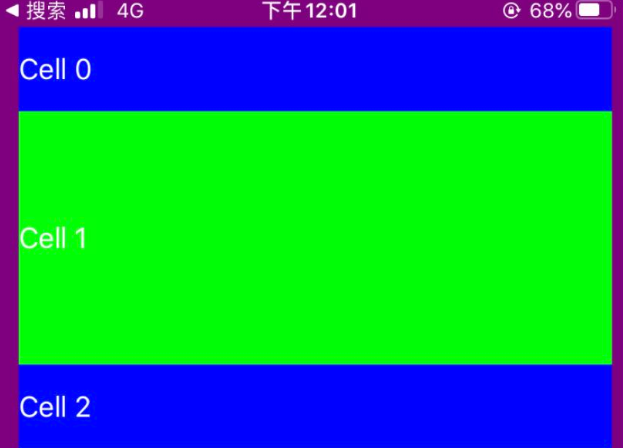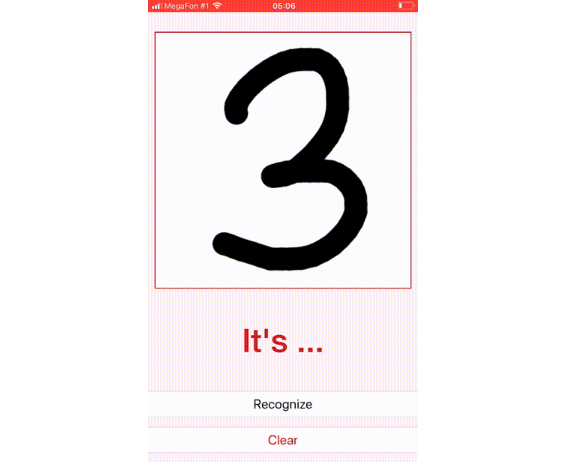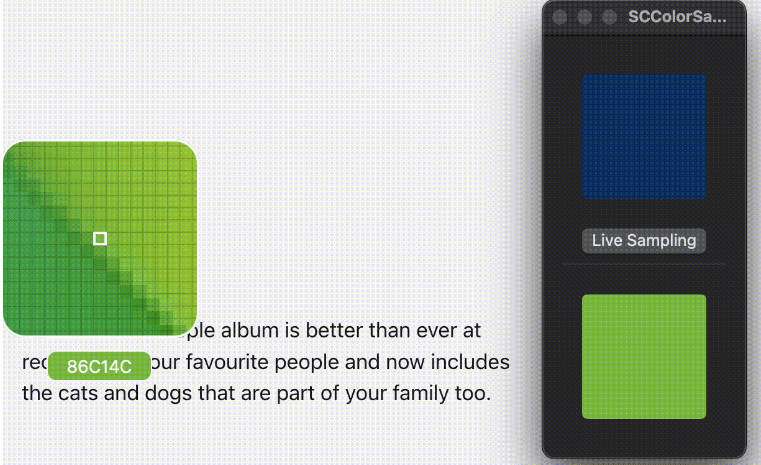SwiftUI Animatable Gradients
A collection of SwiftUI View Modifiers for creating animated color gradients.
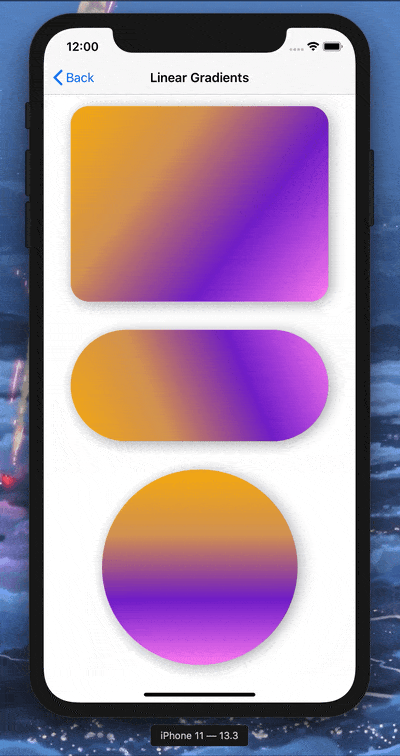
Features
- [x] Linear Gradients
- [x] Radial Gradients
- [x] Angular Gradients
- [x] Direct
ViewModifierUsage onShapes - [x] Direct
ViewModifierUsage onViews -- when a customShapeis defined. - [x] Interpolate between as many start and end colors as you want.
Requirements
- iOS 13.0+
- iPadOS 13.0+
- tvOS 13.0+
- Xcode 11.3+ (for developing)
Installation
AnimatableGradients can be used through the Swift Package Manager. You can add it as a dependency in your Package.swift file:
let package = Package(
//...
dependencies: [
.package(url: "https://github.com/CypherPoet/AnimatableGradients", "0.1.1"),
],
//...
)
Then simply import AnimatableGradients wherever you’d like to use it.
Usage
The view modifiers exposed by AnimatableGradients all conform to its AnimatableGradientModifier protocol. (You can view the implementation here.)
AnimatableGradientModifier Protocol
protocol AnimatableGradientModifier: AnimatableModifier {
associatedtype BaseShape: Shape
associatedtype GradientShapeStyle: ShapeStyle
var baseShape: BaseShape { get }
var startColors: [UIColor] { get }
var endColors: [UIColor] { get }
var completionPercentage: CGFloat { get set }
func gradientFill(in geometry: GeometryProxy) -> GradientShapeStyle
}
To use these modifiers, AnimatableGradients provides the following extensions on Views and Shapes:
- animatableLinearGradient
- animatableRadialGradient
- animatableAngularGradient
(More detailed explanations of each can be found below.)
? In order to achieve animation, your containing views will need to provide the aforementioned modifiers with a bound CGFloat state value that ranges between 0.0 and 1.0.
@State private var animationCompletion: CGFloat = 0.0
This is the "animation completion" percentage that each
AnimatableGradientModifierwill use to generate interpolated color values during each rendered frame.
Additionally, the same containing views will need to animate the change of the animation completion. A common pattern consists of animating the value repeatedly from the containing view's onAppear modifier to create a continuous animation effect:
.onAppear {
withAnimation(
Animation.easeInOut(duration: 1.0).repeatForever(autoreverses: true)
) {
self.animationCompletion = 1.0
}
}
Taken together, a minimal functional example could look like this:
struct ContentView {
@State private var animationCompletion: CGFloat = 0.0
var body: some View {
RoundedRectangle(cornerRadius: 24)
.animatableLinearGradient(
startColors: [.red, .blue],
endColors: [.green, .yellow],
completionPercentage: animationCompletion
)
.onAppear {
withAnimation(
Animation.easeInOut(duration: 1.0).repeatForever(autoreverses: true)
) {
self.animationCompletion = 1.0
}
}
}
}
But now for some more detail...
Animatable Linear Gradients
Usage on Shapes
extension Shape {
public func animatableLinearGradient (
startColors: [UIColor],
endColors: [UIColor],
startPoint: UnitPoint = .topLeading,
endPoint: UnitPoint = .bottomTrailing,
completionPercentage: CGFloat
) -> some View {
...
}
}
RoundedRectangle(cornerRadius: 24)
.animatableLinearGradient(
startColors: [.systemPurple, .systemBlue, .systemGreen, .white],
endColors: [.systemGray, .systemPink, .systemOrange, .systemRed],
completionPercentage: animationCompletion
)
Usage on Views
extension View {
public func animatableLinearGradient<BaseShape: Shape>(
baseShape: BaseShape,
startColors: [UIColor],
endColors: [UIColor],
startPoint: UnitPoint = .topLeading,
endPoint: UnitPoint = .bottomTrailing,
completionPercentage: CGFloat
) -> some View {
...
}
}
Color.clear
.animatableLinearGradient(
baseShape: RoundedRectangle(cornerRadius: 24),
startColors: [.systemPurple, .systemBlue, .systemGreen, .white],
endColors: [.systemGray, .systemPink, .systemOrange, .systemRed],
completionPercentage: animationCompletion
)
Example

Animatable Radial Gradients
Usage on Shapes
extension Shape {
public func animatableRadialGradient (
startColors: [UIColor],
endColors: [UIColor],
centerPoint: UnitPoint = .center,
startRadius: CGFloat? = nil,
endRadius: CGFloat? = nil,
completionPercentage: CGFloat
) -> some View {
...
}
}
RoundedRectangle(cornerRadius: 24)
.animatableRadialGradient(
startColors: [.systemPurple, .systemBlue, .systemGreen, .white],
endColors: [.systemGray, .systemPink, .systemOrange, .black],
completionPercentage: animationCompletion
)
Usage on Views
extension View {
public func animatableRadialGradient<BaseShape: Shape>(
baseShape: BaseShape,
startColors: [UIColor],
endColors: [UIColor],
centerPoint: UnitPoint = .center,
startRadius: CGFloat? = nil,
endRadius: CGFloat? = nil,
completionPercentage: CGFloat
) -> some View {
...
}
}
Color.clear
.animatableRadialGradient(
baseShape: RoundedRectangle(cornerRadius: 24),
startColors: [.systemPurple, .systemBlue, .systemGreen, .white],
endColors: [.systemGray, .systemPink, .systemOrange, .black],
completionPercentage: animationCompletion
)
Example

Animatable Angular Gradients
Usage on Shapes
extension Shape {
/// - Parameters:
/// - fullSpanStartAngle: Setting this property will cause the gradient to being at
/// the specified offset, and then span the entire circumference. (Default: `nil`)
public func animatableAngularGradient (
startColors: [UIColor],
endColors: [UIColor],
centerPoint: UnitPoint = .center,
fullSpanStartAngle: Angle,
completionPercentage: CGFloat
) -> some View {
...
}
public func animatableAngularGradient (
startColors: [UIColor],
endColors: [UIColor],
centerPoint: UnitPoint = .center,
startAngle: Angle = .zero,
endAngle: Angle = .radians(2 * .pi),
completionPercentage: CGFloat
) -> some View {
...
}
}
RoundedRectangle(cornerRadius: 24)
.animatableAngularGradient(
startColors: [.systemPurple, .systemBlue, .systemGreen, .white],
endColors: [.systemGray, .systemPink, .systemOrange, .systemRed],
completionPercentage: animationCompletion
)
Usage on Views
extension View {
/// - Parameters:
/// - fullSpanStartAngle: Setting this property will cause the gradient to being at
/// the specified offset, and then span the entire circumference. (Default: `nil`)
public func animatableAngularGradient<BaseShape: Shape>(
baseShape: BaseShape,
startColors: [UIColor],
endColors: [UIColor],
centerPoint: UnitPoint = .center,
fullSpanStartAngle: Angle,
completionPercentage: CGFloat
) -> some View {
...
}
public func animatableAngularGradient<BaseShape: Shape>(
baseShape: BaseShape,
startColors: [UIColor],
endColors: [UIColor],
centerPoint: UnitPoint = .center,
startAngle: Angle = .zero,
endAngle: Angle = .radians(2 * .pi),
completionPercentage: CGFloat
) -> some View {
...
}
}
Color.clear
.animatableAngularGradient(
baseShape: RoundedRectangle(cornerRadius: 24),
startColors: [.systemPurple, .systemBlue, .systemGreen, .white],
endColors: [.systemGray, .systemPink, .systemOrange, .systemRed],
completionPercentage: animationCompletion
)
Example
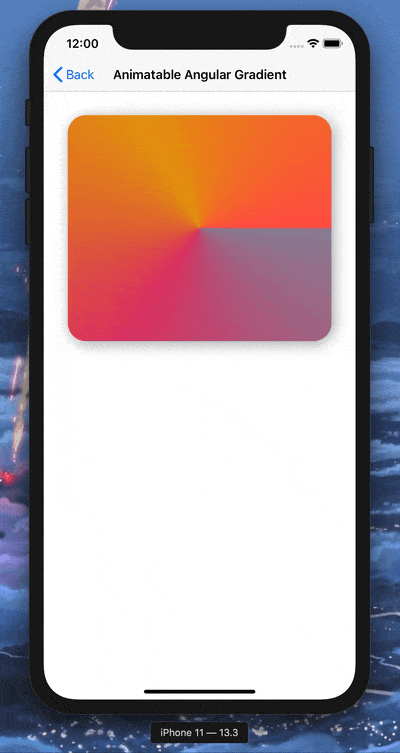
⚠️ Edge Cases
- If you pass a
completionPercentagevalue less than 0, or greater than 1, it will automatically be clamped to the closer endpoint. - Behind the scenes, the
startColorsandendColorsarrays get zipped before the interpolated colors are computed. This means that if their sizes are different, the larger array will be trimmed down to the size of the smaller array, and the excess colors in the larger array won't be used.- As such, if either or both of the
startColorsandendColorsarrays are empty, the gradient will have no colors passed to it and it will appear completely clear.
- As such, if either or both of the
